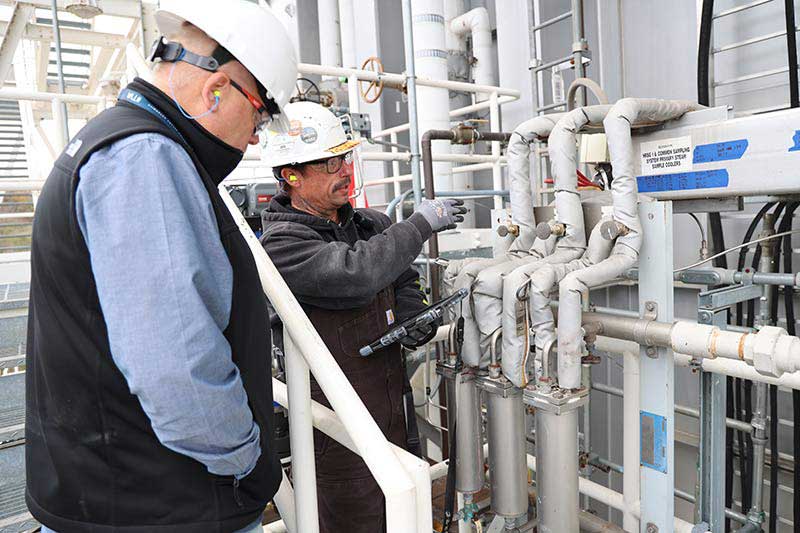A bitter breeze ruffles Norm Flake’s vest as his safety-toe boots clang up the steel stairway headed to the top of Unit 1.
It’s cold up here.

Among all of TVA’s 51 gas, hydro and coal plants across seven states, John Sevier Combined Cycle Plant in the Appalachian foothills of Hawkins County, Tennessee, has been ranked as the No. 1 coldest.
On this day, the temperature at John Sevier is 42 degrees Fahrenheit. The wind chill makes it feel more like 34.
As Norm makes his rounds on a walkway more than 80 feet above the ground, Mike Shenal flags him down.
Mike points to an array of narrow water pipes blanketed in gray material.
These pipes need more insulation, he says.
“That’s a good find,” Norm responds.
As TVA’s Program Manager for Seasonal Readiness, Norm loves getting reports like Mike’s. If there’s anything that can be done – even a seemingly tiny detail – to better prepare the plant for extreme cold weather, Norm wants to know about it.
It’s all about making sure TVA’s megawatts are reliable and resilient when temperatures plunge and demand spikes.
The best way to continue meeting customer demand? Keep the megawatts online.
“And that’s our mission,” Norm said.
Down to 0 Degrees
Throughout the day, Norm checks in on Mike’s team of eight heat-trace specialists, who are going over John Sevier with a fine-tooth comb.
Heat trace circuits are electrical wires strung alongside pipes, valves and other sensitive equipment to prevent freezing. There are more than 30 miles of heat trace – over 15,000 wires – just at TVA’s gas plants.
Heat trace is one of the first lines of defense when TVA plant operators like Harold Jobe and Phillip Burnett are working around the clock to keep John Sevier’s 871 megawatts of power online – even at 0 degrees Fahrenheit or below.
“The most important thing is that we can stay on when we are needed the most,” Harold, a Combined Cycle Operations Technician, said.
